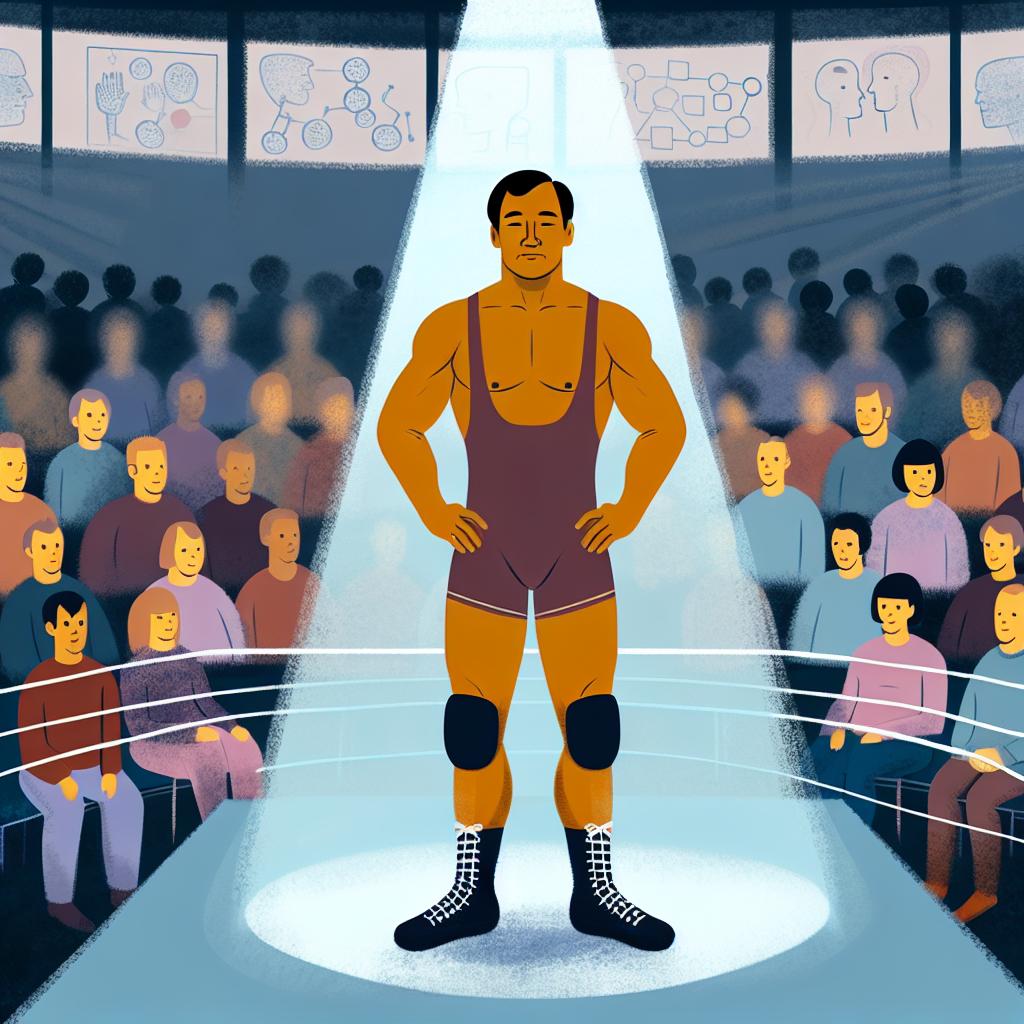The Evolution of Tetsuya Naito’s Character
Tetsuya Naito, a prominent figure in the world of professional wrestling, has had a significant impact on the psychology of the sport through his complex character development. Known for his role in New Japan Pro-Wrestling (NJPW), Naito has transitioned through various personas, ultimately shaping modern wrestling narratives. His journey from an enthusiastic, clean-cut wrestler to the leader of Los Ingobernables de Japón has influenced both fans and fellow wrestlers alike.
The Stardust Genius
Naito’s initial foray into NJPW was under the moniker “Stardust Genius,” a persona that embodied youthful optimism and ambition. Despite having considerable talent, Naito faced challenges in connecting with the audience. This disconnect can be attributed to the psychological nuances of wrestling, where character identification and relatability play crucial roles in audience engagement. The audience often seeks a personal connection with wrestlers, craving authenticity and real emotions, which “Stardust Genius” could not completely offer.
The “Stardust Genius” persona symbolized a dream chaser, someone who aspired to reach the top echelons of wrestling. However, even with his stellar in-ring performances and polished technique, there was an inherent mismatch with the audience’s expectations. Fans found it challenging to fully invest in or resonate with this character. This obstacle was a fundamental turning point for Naito, pushing him to rethink his approach to persona development in wrestling.
The Birth of Tranquilo
After spending time in Mexico, Naito’s character underwent a significant transformation. He adopted a laid-back, dismissive attitude encapsulated in the term Tranquilo, a Spanish word for calm or relaxed. This shift was not just a superficial change but a strategic alteration in wrestling psychology. By embodying indifference and rejecting the typical wrestling hero’s path, Naito challenged the status quo and engaged fans in a new way.
The term Tranquilo became synonymous with Naito’s brand, encapsulating a new wrestling ideology. This era of Naito’s career was marked by a nonchalance and irreverence towards traditional wrestling narratives. By doing so, he redefined the wrestler’s relationship with audience expectations and anticipations, creating an aura of unpredictability around his character. Fans were drawn to this refreshing take on a wrestling persona, enriching their viewing experiences with a sense of anticipation and wonder.
Los Ingobernables de Japón
The formation of Los Ingobernables de Japón marked a pivotal point in Naito’s career. This faction emphasized an anti-establishment philosophy, resonating with fans who identified with rebellion against conventional authority. Naito’s leadership style brought a sense of unpredictability and nonconformity, adding depth to wrestling storytelling. The group’s influence has extended beyond NJPW, impacting wrestling promotions worldwide.
Los Ingobernables de Japón became a beacon of anarchy and defiance, providing fans with a narrative that deviated from traditional wrestling storylines. This wrestling faction broke down old barriers and introduced themes of rebellion and chaos into the wrestling arena. By doing so, they offered an alternative view of wrestling, inviting fans to question and explore the usual dichotomy of good versus evil prevalent in wrestling narratives.
The Impact on Wrestling Promos
Naito’s character transformation has also redefined the art of wrestling promos. His use of sarcasm, subtlety, and a relaxed demeanor contrasts sharply with the aggressive, confrontational style traditionally seen in wrestling. This approach has introduced a new layer of psychology within promos, focusing more on internal character motivations rather than overt displays of dominance.
Most wrestling promos rely heavily on verbal aggression and domination to engage the audience, building tension and excitement through powerful speeches. However, Naito’s choice of sarcasm and subtlety signifies a more cerebral approach to promos. By enticing the audience with nuanced expressions and sly innuendos, he encouraged fans to think critically, rewarding those invested in deeper storyline exploration, an aspect that’s often overlooked in traditional wrestling narratives.
The Role of Audience Perception
Audience perception has been integral to the success and evolution of Naito’s character. By breaking from typical hero-villain archetypes, Naito has blurred the lines between protagonist and antagonist. This ambiguous morality allows fans to project their interpretations, enhancing their emotional investment in storylines. The psychological engagement derived from such characters showcases the importance of complex narratives in professional wrestling.
The effectiveness of Naito’s character is significantly anchored in how audiences perceive his actions. His ability to resonate across a spectrum is rooted in the relatability and reassurance of seeing a human character that mirrors the complexities found in the real world. Challenging wrestling’s established norms, Naito’s ambivalence creates room for varied interpretations, inviting discussions and debates that keep audiences constantly engaged.
Conclusion
Tetsuya Naito’s impact on wrestling psychology is a testament to the power of character evolution and storytelling in sports entertainment. By challenging traditional archetypes and leveraging audience perception, he has reshaped how wrestlers approach character development and engagement. His journey reflects the dynamic nature of wrestling, where innovation and adaptability are key to capturing and maintaining audience interest.
Exploring further insights into wrestling psychology can yield a deeper understanding of professional wrestling’s enduring popularity. Wrestlers like Naito demonstrate that behind the athletic prowess and dramatics lies an intricate world of character and storytelling that is constantly evolving, requiring a delicate balance of maintaining tradition while embracing change. This balance remains the cornerstone of professional wrestling’s future, fostering a continuous cycle of development and engagement that’s vital for its sustained relevance.
This article was last updated on: August 24, 2025
